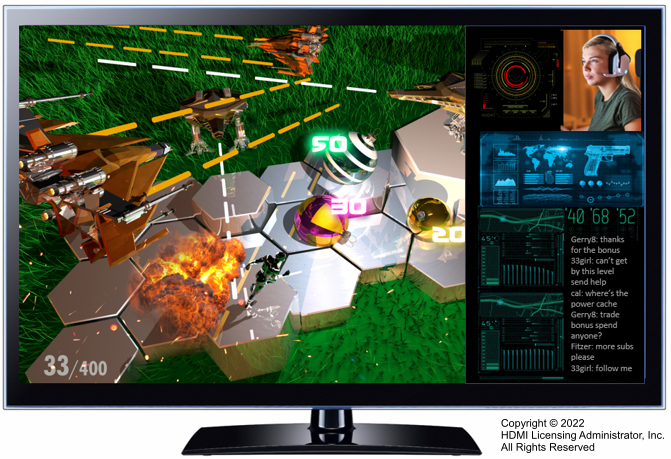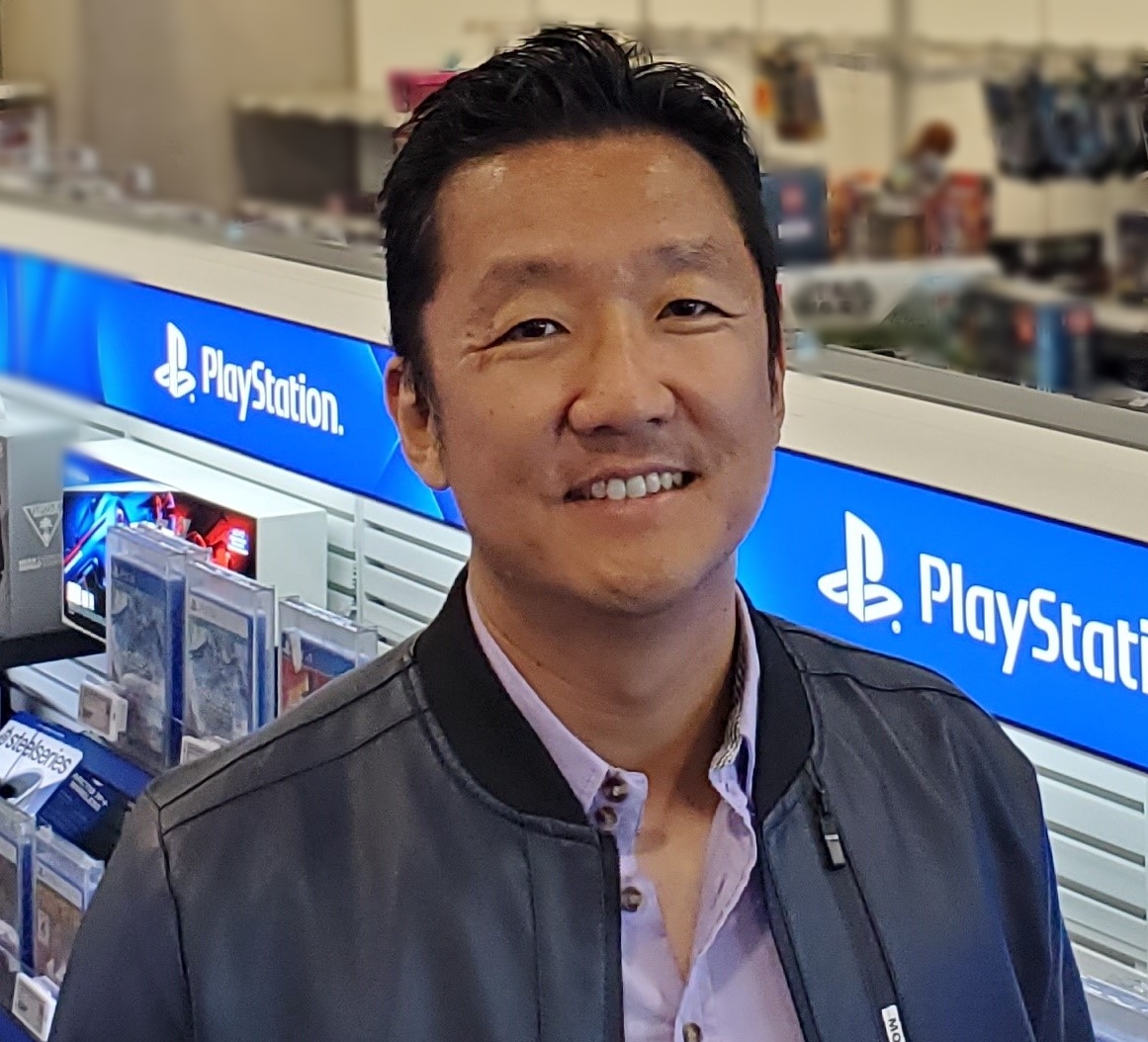Source-Based Tone Mapping Makes HDR More Accessible To TV Viewers, Says HDMI LA CTO
A new HDMI® Specification update brings more consistent HDR experience across all devices.

More and more people around the world use streaming video services. Many use the built-in apps of their Smart TVs while many others use external devices, such as Amazon Fire TV sticks, Roku boxes and other devices, to bring streaming TV into their homes. However, the HDR experience may not be consistent between the app within the Smart TV and the external devices and many people may never notice.
HDR, or High Dynamic Range, has a complex set of data that makes TV pictures look more true to life. How much of that data is shared between a device and a streaming app has not been consistent. A streaming app within a Smart TV may sometimes get more HDR-related data from the TV than an external device because the app lives inside the television and has access to more of its inner workings.
But that’s all changed since the HDMI Forum earlier this year released its HDMI 2.1a Specification with support for Source-Based Tone Mapping (SBTM), says Jeff Park, chief technology officer of HDMI® Licensing Administrator, Inc. (HDMI LA).
In this interview, Park explains what SBTM is and how it works, why the update was needed, the difference it makes for streaming services that frequently blend standard dynamic range (SDR) and HDR elements on the same screen, its role in working with existing HDR technologies and other uses beyond enhancing TV content.
Q: The HDMI Forum recently released the HDMI 2.1a spec version with support for a new feature called Source-Based Tone Mapping (SBTM) that improves HDR in the TV. Can you describe what it is and what it does?
Jeff Park: The new spec brings more flexibility. To explain, let me step back and paint a picture. Today, Netflix, Hulu, the YouTube app and other apps with support for HDR are built into smart TVs.
However, if viewers like their Apple TV interface, Roku’s or whatever, or they're just used to that, they might have an external device connected via an HDMI port. In those cases, that’s where their apps live. From a user perspective, it should be the same.
However, the reality from a very low-level technical point of view is it’s different, especially when it comes to control over HDR content display. If there’s an app inside the TV, the TV itself has a lot more information about itself that it can share with the app. If the video app is playing HDR, it can have a lot more flexibility in how it maps the HDR video onto that screen because of its knowledge about that TV.
In the case of the same app that lives on an external device outside the TV connected via an HDMI port, the connection only knows that it’s HDR10, HDR10+ or Dolby Vision. That's about it. There is some very basic information, but not the level of detail compared to the apps built into the TVs.
Source-Based Tone Mapping takes more detailed TV capability data and provides it to the external device that’s connected via HDMI technology so the external device, aka Source, can do the tone mapping on its own. Remember, the actual display has certain capabilities in terms of brightness and color. Tone mapping takes all of that picture data and maps it onto displayed pixels to make the picture look as great as possible.

Q: What’s an example of where SBTM can make a difference?
JP: A streaming service user interface with all of the video thumbnails and posters. The video in the background might be HDR, but the UI and the thumbnails in front of the looping video on the back might be SDR.
Depending on the situation, the app may want to have full control over that tone mapping aspect. If the app is internal to the TV, it has a lot more data and control. When it's outside, the app has less.
External devices simply send the HDR format, Dolby Vision or HDR10 as a couple of examples, and then just trusts that the TV will do exactly what it wants it to do. In most cases, that’s fine. But there may be situations where the app or even the external devices want more control for whatever application is being used.
What Source-Based Tone Mapping does is set that as the foundation. The tone mapping capability that the internal app would have now is available to the external device connected via the HDMI connection. What SBTM really provides is a lot of flexibility and a consistent experience across the board.
Q: Can devices support SBTM via a firmware update?
JP: Absolutely. This is mostly software. HDMI 2.1a was specifically designed to enable firmware upgrades of devices. I don't see why any modern platform built within the last five years or so can’t just software upgrade to add this capability.
Q: Does SBTM work together with various existing HDR technologies?
JP: This really complements existing HDR technologies and simply brings on additional information the source can use to have more control over tone mapping. There will be a lot of applications that are fine without it. However, there are use cases where the source or application wants more control. Gaming comes to mind. It will definitely benefit from SBTM.
Q: A big difference between standard dynamic range and HDR are the different color spaces used by each. How are they accommodated or reconciled in the example you gave of SDR and HDR content being on screen at the same time?
JP: SBTM really provides that control. The additional data will relay to the source device using the SBTM mechanism to describe what the display can do, for example, minimum brightness, peak brightness for HDR, the same for SDR and other color volumetric information. That can be really helpful. When you're doing, for example, an SDR UI with an HDR video, there’s now full control over how the blending is done. Now, the source can have full control over that.
Whereas before SBTM, a device just sent over HDR content or SDR content or a combination of both and relied on the TV to do the tone mapping.
Q: Does this open up a can of worms for the HDR workflows of Netflix and other VOD and FAST TV channel providers?
JP: Not really since nothing is forced to change if there’s not the desire. Whatever the platform is, they can decide how to handle this for you.
Any device can decide how much of the SBTM data to make available to the streaming apps or the platform where the apps run.
SBTM has lots of flexibility so the device can handle all SBTM duties, or the device can pass along all of the SBTM info to the platform and/or apps to give them all of the control. It’s really up to the device, platform and app owners to work together and decide what works best for their applications.
Q: This conversation has focused on television. Are there other uses for SBTM?
JP: Gaming is a lot more dynamic than streaming TV. HDR for TVs and movies doesn’t change as drastically as a game. If in a game you constantly run from one internal area to outside and back and forth, there are a lot of changes to the brightness/color. The system doesn’t know if the player is going to go left or right. That’s the whole point of real-time interactive games.
It could also be large venue displays that want to take advantage of HDR because they have very unique requirements and there’s a desire to enable sources to have more control over tone mapping. So anywhere you have HDR content or a mix of HDR and SDR.
Q: Any closing thoughts?
JP: HDMI 2.1a, which enables SBTM, is one of those examples of adding a feature and from an end-user perspective, they never really tell it’s there. That describes a lot of our features. If we do our job well, everything should work, and nobody should notice. It delivers the experience and the improvements, but at the end of the day, most consumers won’t notice it since it’s designed to be seamless.
That’s the baseline philosophy for HDMI Specifications. You plug it in, you get the best experience possible, and you never have to think about it.
For more information go to www.hdmi.org.
The terms HDMI, HDMI High-Definition Multimedia Interface, HDMI trade dress and the HDMI Logos are trademarks or registered trademarks of HDMI Licensing Administrator, Inc.
Broadcasting & Cable Newsletter
The smarter way to stay on top of broadcasting and cable industry. Sign up below
